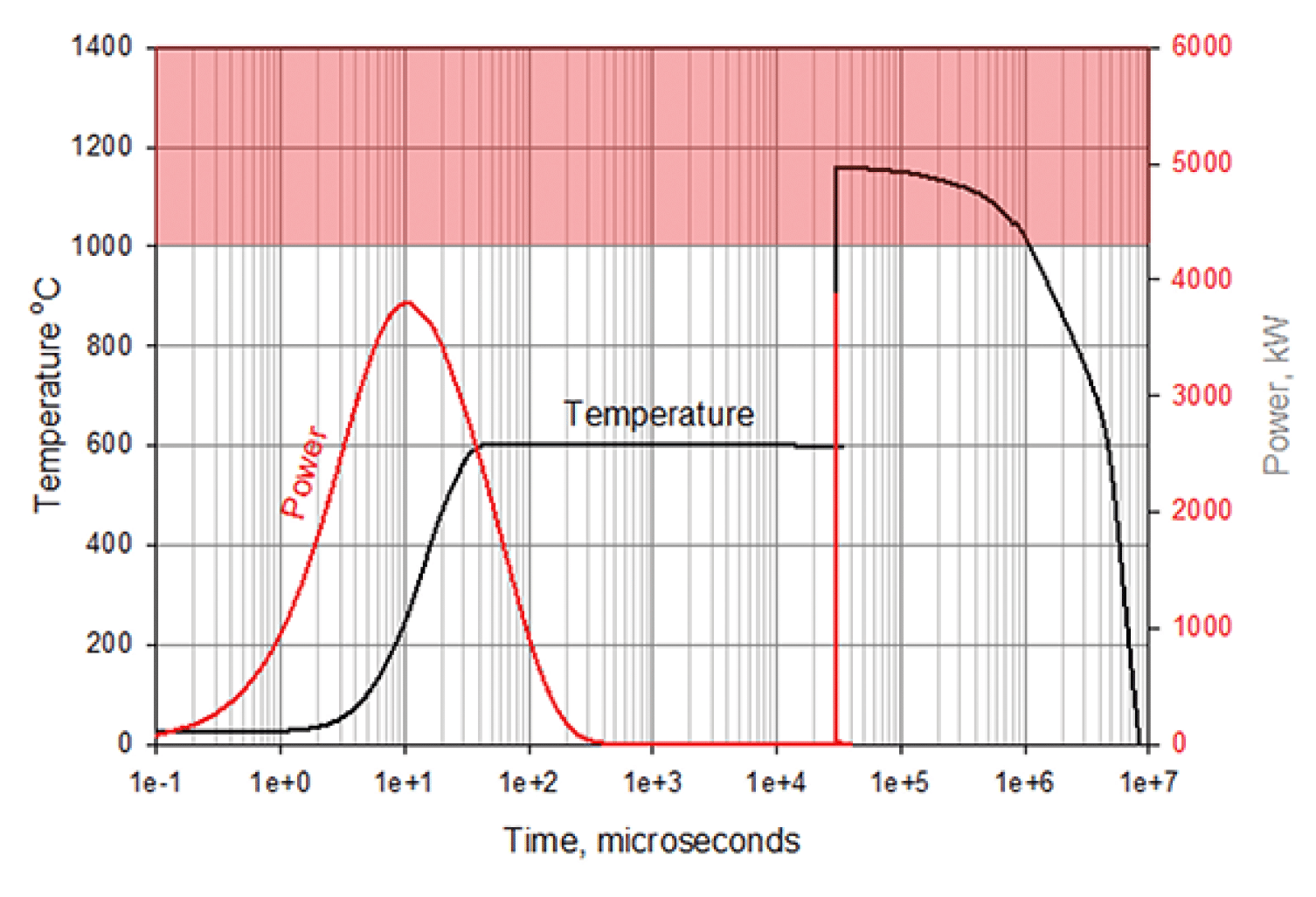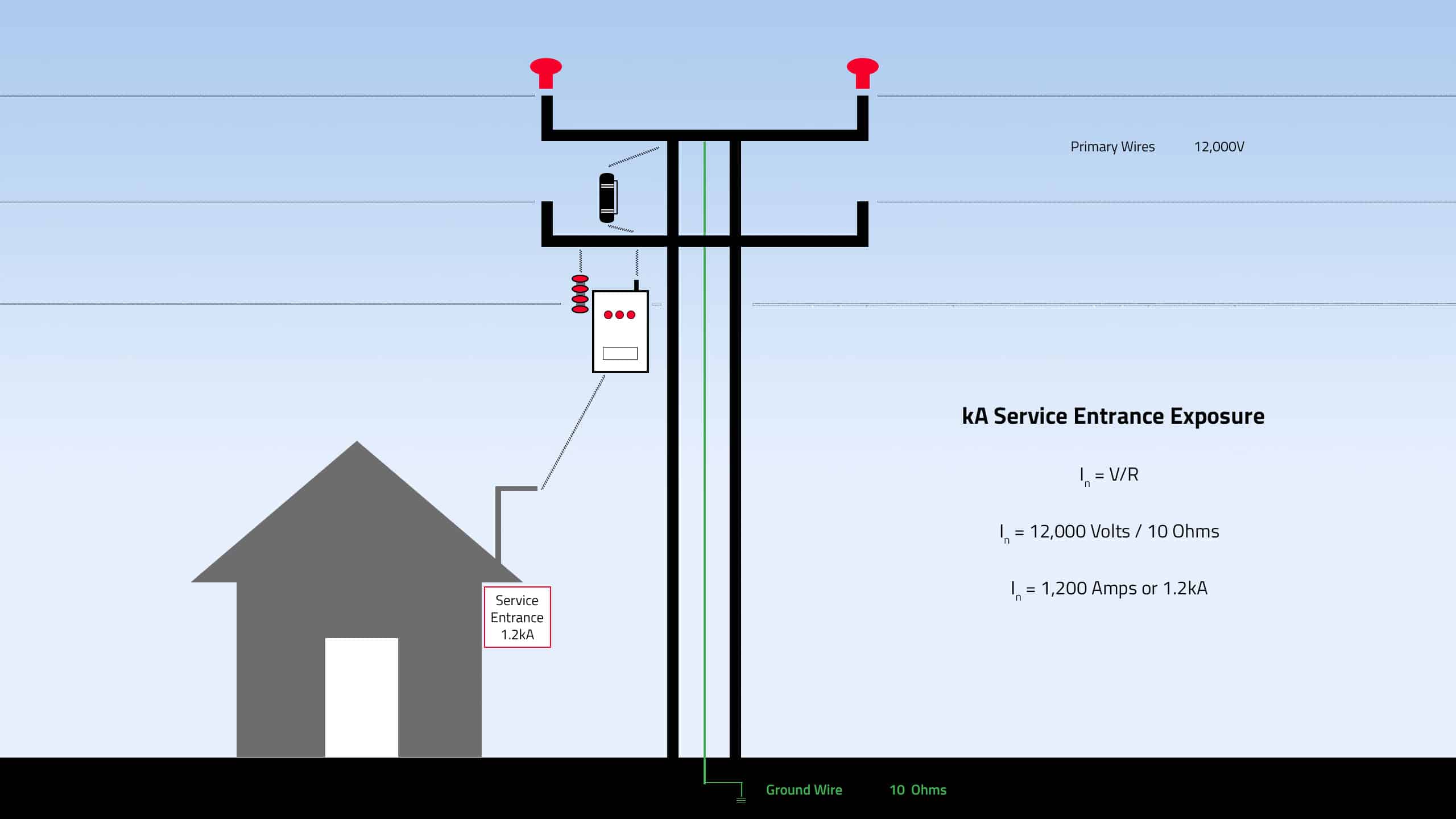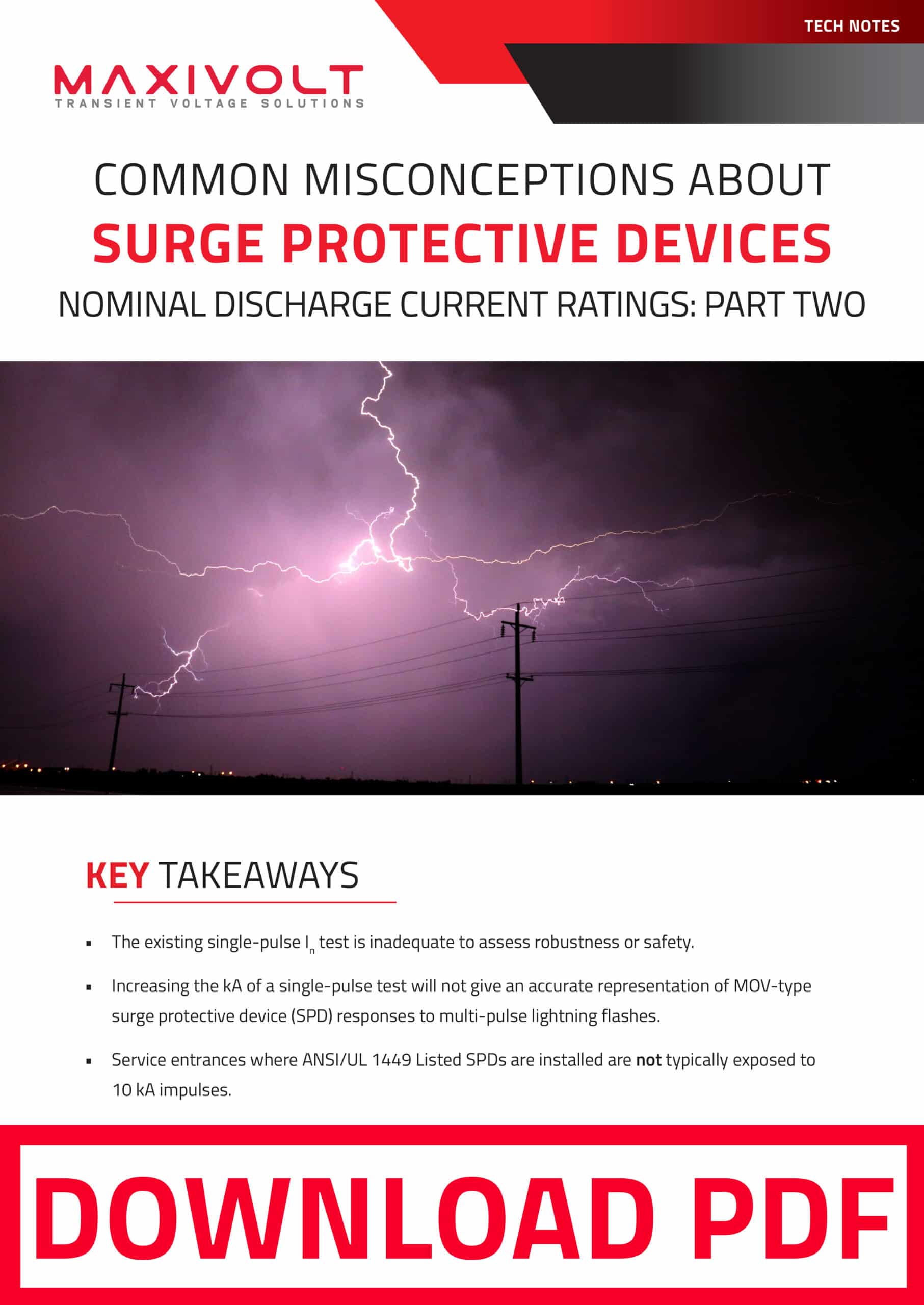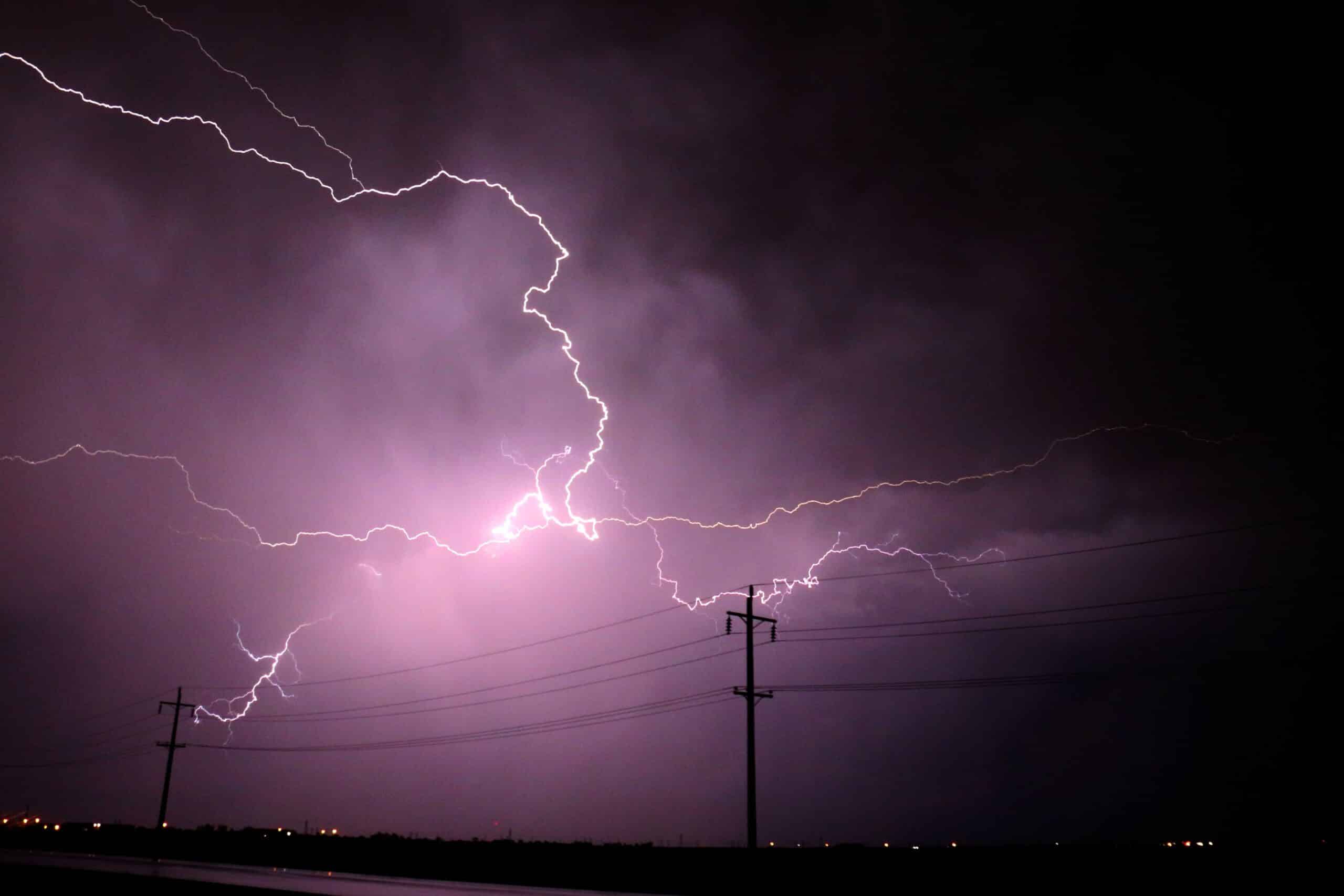Common Misconceptions About Surge Protective Devices Nominal Discharge Current Ratings: Part Two
Key Takeaways
- The existing single-pulse In test is inadequate to assess robustness or safety.
- Increasing the kA of a single-pulse test will not give an accurate representation of MOV-type surge protective device (SPD) responses to multi-pulse lightning flashes.
- Service entrances where ANSI/UL 1449 Listed SPDs are installed are not typically exposed to 10 kA impulses.
Important Note: The In test currently consists of 15 single impulses (<50 millionths of a second in duration) at either 3kA, 5kA, 10kA, or 20kA. Single impulses are injected into the SPD one minute apart from each other (+/- 15 seconds). For the purposes of this document, this is referred to as the “single-pulse In test.” The In test does not test an SPDs ability to withstand temporary overvoltage (TOV) or several conditions representing the overwhelming majority of SPD failure modes.
Read Part One of Common Misconceptions About SPDs here.
Introduction
ANSI/UL 1449 represents a widely recognized standard delineating requirements for Surge Protective Devices (SPDs) deployed in electrical applications. This benchmark standard plays a significant role in the testing and certification of SPDs. Nonetheless, there exists an imperative need to revise the existing standard to better align with an expanding knowledge base of the surge environment and evolving technologies.
For public safety, it is imperative to conduct a diligent assessment of misconceptions that exist in the current zeitgeist of surge protective devices.
Important Note: The In test currently consists of 15 single impulses (<50 millionths of a second in duration) at either 3kA, 5kA, 10kA, or 20kA. Single impulses are injected into the SPD one minute apart from each other (+/- 15 seconds). For the purposes of this document, this is refered to as the “single-pulse In test.” The In test does not test an SPDs ability to withstand temporary overvoltage (TOV) or several conditions representing the overwhelming majority of SPD failure modes.
Misconception Three: The ANSI/UL 1449 Nominal Discharge Current test already considers multi-pulse flashes
Given the well-established knowledge that multi-pulse flashes can cause unsafe SPD failures,[8] one may question why the current version of ANSI/UL 1449 does not already include multi-pulse testing to ensure SPD safety. The late Al Martin provided a possible explanation [3] by quoting the 1976 work of Bodle et al., who stated:
“For design tests of the lightning withstand capability of plant items and associated equipment, both in the communication and power industries, a single large impulse is employed. This is an ‘equivalency’ type of test dictated by practical test considerations. Experience has indicated, however, that this is an acceptable simulation of actual field exposure, which includes multiple component strokes.”
Essentially, Bodle and his co-authors are suggesting multiple-surge testing is unnecessary because single-pulse testing is an adequate simulation of field exposure, which includes multiple component strokes. This assertion may hold true for gas tubes or carbon blocks, which were the primary types of SPDs in use in 1976. However, with the current proliferation of low-voltage, metal oxide varistor (MOV)-type SPDs, it is clear this approach is inadequate and puts users at risk. [3]


The modern generation of low-voltage SPDs predominantly utilizes clamping components such as MOVs. It is well known these clamping SPDs have lower current handling capabilities when compared to SPDs utilizing switching components like gas tubes and thyristors. While the existing In test could have been adequate when switching-type SPDs dominated the transient voltage mitigation market, this is no longer the case with the proliferation of low-voltage, MOV-type SPDs. [3]
In a world where clamping SPDs dominate, the existing single-pulse In test is inadequate to assess robustness or safety. This inadequacy is validated by empirical data, such as a study [6] where half of the MOV samples subjected to a multi-pulse burst of 8/20 surges at rated current showed damage, while the other half tested with a single 8/20 surge at rated current repeated at intervals of 60 seconds or more showed no damage. [6] Furthermore, in another test, Rousseau et al. [9] found that a MOV subjected to sixty 20 kA 8/20 surges spaced 60 seconds apart did not fail, but the same MOV subjected to as few as five 20 kA 8/20 surges spaced 50 ms apart did fail.
But why does an ANSI/UL 1449 Listed SPD, even those with 20 kA In, fail when exposed to multi-pulse flashes (even with impulse currents as low as 1.64 kA)? [19]
Multi-pulse lightning flashes generally consist of three to five impulses with time durations between each impulse of 15 ms to 150 ms. [23], [24] Many of these flashes also have a long continuing current with an interstroke interval as large as several hundreds of milliseconds. [4] When impulse current passes through an MOV milliseconds apart, heat accumulation can lead to a potentially destructive uneven temperature rise which is what is missed when relying on a single-pulse test that allows the SPD to cool for ≈60 seconds between impulses. [3], [6], [7], [8], [9], [10], [19]
A single-pulse test, regardless of its current level, does not accurately represent the amount of energy an SPD has to dissipate in such a short period of time when subjected to a multi-pulse flash. In other words, increasing the kA of a single-pulse test will not give an accurate representation of MOV-type SPD responses to multi-pulse flashes.

Misconception Four: The service entrance is typically exposed to 10kA impulses


Modern lightning studies show utility distribution arresters are rarely exposed to lightning surges exceeding 5 kA. [24] Therefore, it is illogical to state that service entrances where ANSI/UL 1449 Listed SPDs are installed are “typically” exposed to 10 kA impulses.
The Electric Power Research Institute (EPRI) conducted a six-year study to characterize lightning-caused surges and damage occurring on utility distribution systems. This study was performed in two phases. In Phase I, Lightning Transient Recorders were utilized to measure lightning surges on Florida Power Corporation distribution feeders in St. Petersburg, Florida. Phase II obtains a larger data set of lightning surge waveshapes and compares the characteristics of lightning surges measured at several locations throughout the United States (Chattanooga, TN, Denver, CO, and Little Falls, NY). At the completion of the study, 1309 lightning surges were recorded. [24]
The study’s data showed most of the current surges have crest magnitudes less than 1 kA. Only about 13% of the measurable current surges had magnitudes greater than 1 kA and just six of the 1309 surges exceeded 10 kA, demonstrating the rarity of such events. Knowing the amount of impedance these events must overcome between the utility distribution system and the service entrance, [27] this data demonstrates how incorrect it is to say 10 kA is “typical” at a standard service entrance (see infographic at left).
Conclusion
Because MOV-type SPDs dominate the market, the existing single-pulse In test is inadequate to assess robustness or safety as it does not account for heat accumulation within these devices that are caused by multi-pulse lightning flashes spaced just milliseconds apart. Therefore, simply increasing the kA of a single-pulse test will not give an accurate representation of MOV-type SPDs responses to multi-pulse flashes, either.
Furthermore, utility distribution arresters are rarely exposed to lightning surges exceeding 5 kA. [24] Pairing this knowledge with the impedance such events face to merely reach a service entrance prove that service entrances where ANSI/UL 1449 Listed SPDs are installed are not typically exposed to 10 kA.
Resources
[1] Working Group C4.407, “Lightning Parameters for Engineering Applications”, CIGRE, August 2013
[2] W. Brooks, D. Barnett, W.A. Harrison, D. Hattz, J. Mankowski, J. Dickens, A. Neuber, “Investigation of Lightning Attachment Risks to Small Structures Associated With the Electrogeometric Model (EGM)”, IEEE Transactions on Plasma Science, Vol. 48, No. 6, June 2020
[3] A. Martin, “Effect of Multi-burst Lightning Flashes on Surge Protective Devices Using MOVs”, www.incompliancemag.com, October 31, 2017”
[4] A. Martin, “How and Why Varistor Failure Occures Including the Effect of Multipulse Surges”, www.incompliancemag.com, August 31, 2020
[5] C. Heinrich, S. Wagner, B. Richter, W. Kalkner, “Multiple Tests on Surge Arresters for Medium and Low Voltage Systems”, 1998 International Conference on Lightning Protection (ICLP), 1998
[6] R. A. Sargent, G. L. Dunlop, M. Darveniza, “Effects of Multiple Impulse Currents on the Microstructure and Electrical Properties of Metal-oxide Varistors”, IEEE Transactions on Electrical Insulation, Vol. 27, No. 3, June 1992
[7] C. Zhang, X. Yi, C. Li, G. Zhang, M. Kong, “Study on Lightning Thermal Damage Characteristics of ZnO Varistor under Operating Duty”, 2022 IEEE Asia-Pacific Conference on Image Processing, Electronics and Computers (IPEC), 2022
[8] C. Zhang, H. Xing, P. Li, C. Li, D. Lv, S. Yang, “An Experimental Study of the Failure Mode of ZnO Varistors Under Multiple Lightning Strokes”, Electronics Journal, MDPI, 2019
[9] A. Rousseau, X. Zang, M. Tao, “Multiple Shots on SPDs – additional tests”, 2014 International Conference on Lightning Protection (ICLP), 2014
[10] S. Yang, S. Chen, Y. Zhang, W. Dong, J. Wang, M. Zhou, D. Zheng, H. Yu, “Triggered Lightning Analysis Gives New Insight into Over Current Effects on Surge Protective Devices”, Guangdong Lightning Protection Center, 2011
[11] M. Edirisinghe, R. Montano, V. Cooray, F. Roman, “Performance comparison of varistor models under high current derivative impulses”, International Letters of Chemistry, Physics and Astronomy, ISSN: 2299-3843, Vol. 11, pp 40-53, 2013
[12] NFPA, “Transcript – Day 2”, NFPA NEC 70 Technical Session, June 9, 2022
[13] M. Darveniza, B. Richter, D.A. Roby, “Multipulse Lightning Currents and Metal-Oxide Arresters”, IEEE Transactions on Power Delivery, Vol. 12, No.3, July 1997
[14] B. Vahidi, K. J. Cornick, D. A. Greaves, “Effects of Multiple Stroke on ZnO Surge Arresters”, 1998 International Conference on Lightning Protection (ICLP), 1998
[15] M. Darveniza, D. R. Mercer, L. R. Tumma, “Effects of Multiple Stroke Lightning Impulse Currents on ZnO Arresters”, University of Queensland, Australia
[16] M. Darveniza, D. Roby, L. R. Tumma, “Laboratory and Analytical Studies of the Effects of Multipulse Lightning Current on Metal Oxide Arresters”, IEEE Transactions on Power Delivery, Vol. 9, No. 2, April 1994
[17] M. Darveniza, D. R. Mercer, “Laboratory Studies of The Effects of Multipulse Lightning Currents on Distribution Surge Arresters”, IEEE Transactions on Power Delivery, Vol. 8, No. 3, July 1993
[18] M. Darveniza, “Failure Modes of Surge Protective Devices”, Department of Electrical and Computer Engineering, The University of Queensland, Australia
[19] C. Li, C. Zhang, G. Zhang, M. Kong, Z. Yang, “Analysis of the failure mode of surge protector under multi-pulse lightning strikes and its mechanism”, The 5th International Conference on Electrical Engineering and Green Energy (CEEGE), Berlin, June 2022
[20] A. Mansoor, F. Martzloff, “The Dilemma of Surge Protection vs. Overvoltage Scenarios: Implications for Low-Voltage Surge-Protective Devices”, IEEE 8th Annual Conference on Harmonics and Quality of Power, Athens, October 1998
[21] USGCRP, 2018: Impacts, Risks, and Adaptation in the United States: Fourth National Climate Assessment, Volume II: [Reidmiller, D.R., C.W. Avery, D.R. Easterling, K.E. Kunkel, K.L.M. Lewis, T.K. Maycock, and B.C. Stewart (eds.)]. U.S. Global Change Research Program, Washington, DC, USA, 1515 pp. doi: 10.7930/NCA4.2018
[22] EPRI Power Quality Knowledge Program, “Protecting Against Surges and Temporary Overvoltage”, PQ TechWatch, Electric Power Research Institute (EPRI), August 2011
[23] Working Group C4.407, “TB549 Lightning Parameters for Engineering Applications”, CIGRE, 2013 [24] IEC 62305-1, “Protection against lightning – Part 1: General principles”, Edition 2.0, 2010-12
[25] Electric Power Research Institute (EPRI) “Characteristics of Lightning Surges on Distribution Lines, Second Phase – Final Report”, Research Project 2542-1, December 1991
[26] K. Eilers, M. Wingate, E. Pham, “Application and Safety Issues for Transient Voltage Surge Suppressors”, IEEE Transactions on Industry Applications, Vol. 36, No. 6, November/December 2000
[27] W. Brooks, M. LaPointe, L. Collier, J. Mankowski, J. Dickens, D. Hattz, N. Koone, A. Neuber, “Lightning Current Propagation in Electrical Conduit”, IEEE Transactions on Plasma Science, Vol. 50, Issue 1, January 2022





